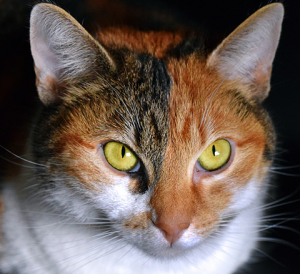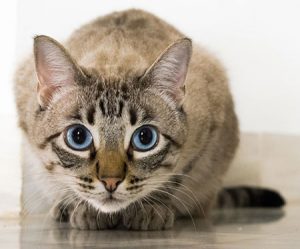Cats are naturally curious creatures, and while their selective eating habits often keep them out of trouble, dangers still lurk in unexpected places. Many common household products – ranging from foods to cleaning supplies – can pose serious risks to our feline friends. As a responsible pet owner, understanding these hazards is crucial to creating a safe and cat-friendly environment.
In this post, we’ll walk you through the most common toxic products for cats and provide practical tips on how to keep them out of reach.
Common Household Hazards for Cats
There are plenty of hazards around the home that can be potentially harmful to your cat. Here are some which we think are often overlooked when it comes to cat safety – keep an eye out for:

Antifreeze
Many types of antifreeze contain a chemical called ethylene glycol. This is a very sweet-tasting substance (so sweet that even cats can detect it!). As a result, cats tend to drink it up, given the chance. Once in the body, it acts a bit like alcohol, causing confusion and wobbliness.
This is potentially dangerous for the cat, but if untreated, it gets worse, as a day or so later, their kidneys suddenly shut down – usually with fatal consequences. If treated early, intensive care and the use of the antidote can save them, but if they have gone into kidney failure before treatment starts, the prognosis is very poor.
Chocolate
We tend to think of dogs getting chocolate poisoning, not cats – but cats are susceptible as well. The active ingredient is a chemical called theobromine, which over-excites the heart and nervous system. This chemical is closely related to caffeine, which has similar effects.
Cats that eat chocolate may suffer vomiting and diarrhoea, abnormal heartbeats, seizures or even collapse and death; however, fortunately it is rare for cats to eat enough to become seriously ill.
Different types of chocolate contain different amounts of theobromine – white chocolate has the least, then milk, then dark, and cocoa powder the most. If your cat does gobble up some chocolate, give us a ring for advice!
Dog flea treatments
One common ingredient in some (although not all) dog and rabbit flea spot-ons is permethrin. This is safe in dogs, but it’s lethally toxic to cats.
Permethrin damages the nervous system causing hypersalivation, tremors, high temperature then severe seizures, coma and usually death. It can even harm cats that have just rubbed up against a treated dog!
If you think your cat may have been dosed with a permethrin-containing product, call us immediately. To prevent problems, NEVER use dog or rabbit products on a cat unless the label specifically states that it is safe to do so. No flea treatment offered by Goddard Veterinary Group contains permethrin.
Lilies
All parts of the lily plant are harmful to cats, even the pollen. The toxin causes catastrophic and usually irreversible kidney failure. Cats become poisoned after grooming themselves, having touched a lily plant, or having got pollen on their coat. In some cases, poisonings have even occurred after cats drink water that lilies had been in. If you have cats – no lilies in the house! If you’re concerned, call us right away.
Medicines
Most human medicines are toxic to cats – partly for dose reasons (humans being much bigger need higher doses!), but also because cats do not break down medications as efficiently as humans do.
The most dangerous is paracetamol, which is a lethal poison for cats – never, ever give paracetamol medications to a cat. It’s a really common thing that we see, though, causing depression, vomiting, damage to red blood cells (so the gums go blue or even brown), swollen head and paws, then liver failure and death. There is an antidote, but it needs to be given really quickly!
Pesticides
Although insecticides (like wasp or ant killers) and slug pellets are highly toxic to cats, cases where cats are harmed by them are rare. However, we often see cats that have been poisoned with rat- or mouse-poisons – often because they’ve eaten a poisoned animal. This “secondary poisoning” is most likely with the “professional-strength” rat baits, and usually results in uncontrolled bleeding.
The symptoms are depression, lethargy, bruising, maybe a rash, and bleeding from the nose, mouth and bowels; sometimes, the bleeding is entirely internal. There is an antidote that is very effective, but very sick cats tend to run away and hide, so if your cat starts showing early signs and there’s rat-bait down, get them to us ASAP. Some of these chemicals can stay active in the body for many weeks, so affected cats may need regular dosing with the antidote for a prolonged time after poisoning.
Washing liquids and detergents
Possibly the most overlooked item on this list – but just as deadly as the others. Concentrated washing liquids (e.g. the gel or liquid sachets for use in a washing machine) are lethal to cats. They tend to play with them, but when their claws burst the envelope, the liquid causes deep burns to their skin. This is painful and very nasty, but not usually fatal – unfortunately, cats then try to lick it off.
Once in the mouth, the detergents burn the mouth, gullet and windpipe, resulting in fluid loss, shock, and often suffocation as the airways swell. If exposed, wash them as soon as possible and then call us – they’ll probably need intensive care, and even then the prognosis is guarded.
Contact Goddard Vets for Expert Cat Care and Advice
If you think your cat may have been poisoned, call us IMMEDIATELY. We also need to know, if possible, what it is they’ve been exposed to. Remember, any delay in treatment may prove fatal.
Goddard Vets offer 24 hour emergency care at the following practices in London:
Mandeville Veterinary Hospital (Northolt)
Address
15 Mandeville Road
Northolt
Middlesex
UB5 5HD
Tel:
020 8845 5677
VIEW PRACTICE ONLINE
Stone Lion Veterinary Hospital (Wimbledon)
Address
41 High Street
Wimbledon Village
Wimbledon
London
SW19 5AU
Tel:
020 8946 4228
VIEW PRACTICE ONLINE
Wanstead Veterinary Hospital
Address
84 New Wanstead
Wanstead
London
E11 2SY
Tel:
020 8989 7744
VIEW PRACTICE ONLINE


